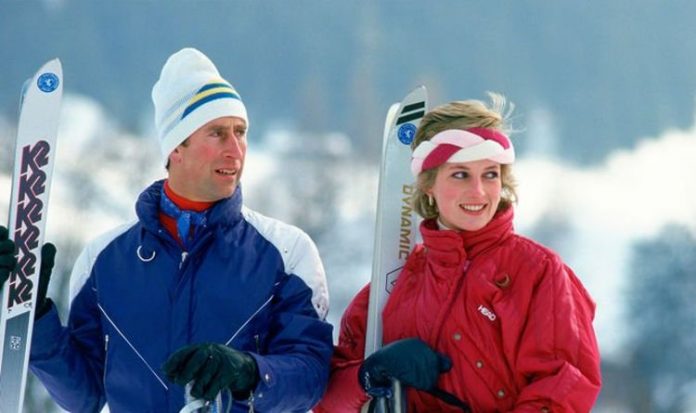The Prince and Princess of Wales’ chaotic marriage was one of the central storylines in the latest season of the Netflix drama series, The Crown — and it has caused a storm among royal fans. Some of those watching the show are divided over its portrayal of the royal relationship and have criticised it for being too harsh towards Charles and damaging his reputation, while others believe Diana was indeed the victim in their marriage. One particular episode focuses on how Diana and Charles coped with a skiing tragedy which took place in March 1988.
The couple had gone to a Swiss resort with friends and family, including the Duchess of York.
Diana and Sarah Ferguson chose not to ski on one particular day while Charles led the rest of the group down the slopes — only for a deadly avalanche to hit the party.
His close friend and a former aide to the Queen, Major Hugh Lindsay, was killed in the disaster while another pal, Patti Palmer-Tomkinson, broke both legs in the accident.
Eyewitnesses claimed Charles was “visibly distressed” and “weeping” when rescued by a helicopter.
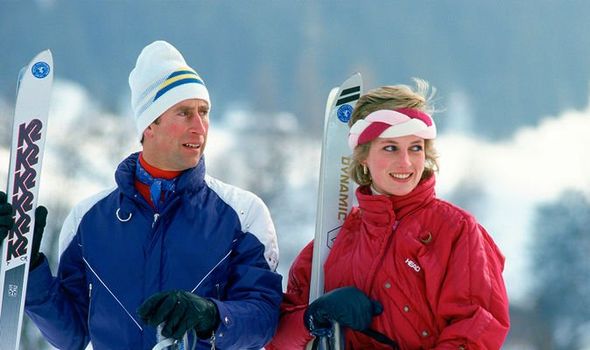
Prince Charles and Princess Diana skiing (Image: Getty)
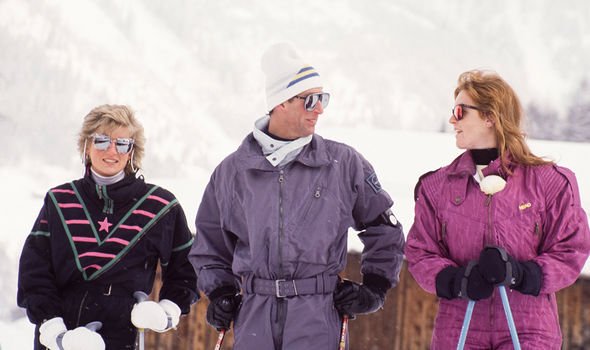
Diana, Charles and Fergie in 1988 during their skiing trip (Image: Getty)
The Crown emphasises how the Princess of Wales feared her husband had died in the collision, too, and realised afterwards that she was so grateful that he survived she had to make the marriage work.
Charles, however, appears more determined than ever to leave his wife so that he can openly be with his mistress, Camilla Parker Bowles, in the drama.
Yet, this is not the version of events recalled in Howard Hodgson’s biography, ‘Charles — The Man Who Will Be King’.
The author explained that Charles was very vulnerable after the tragedy, and “it had been the worst day of his life since the death of Lord Mountbatten”.
Mr Hodgson continued: “Not only had Lindsay been a good friend, he was his guest and had died while with him and in so doing had made his young wife a pregnant widow.”
Charles had intended to give a press conference after the avalanche, but Diana and his press secretary persuaded the heir that a written statement should be read on his behalf.
READ MORE: Princess Diana’s brutal joke about ‘needing second marriage’
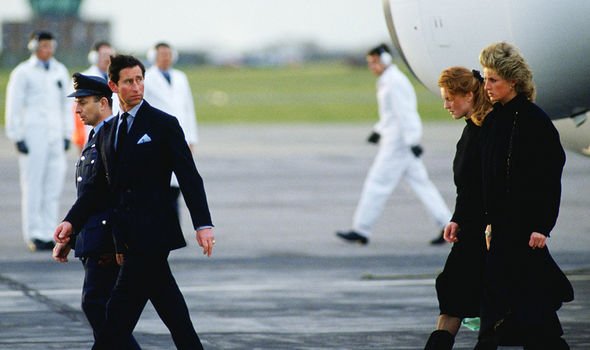
Charles, Fergie and Diana returning from the ski trip in 1988 (Image: Getty)
Mr Hodgson explained: “Throughout the manic 36 hours following the accident, the Princess had been calm, extremely sensible and for the first time in a long while a real support to her husband, which those there readily accept — if not quite to the extent that she was later to claim.”
Diana told her biographer, Andrew Morton, that she had done all the organising of their royal life in the immediate aftermath of the tragedy, as Charles was too upset to focus on anything.
This conclusion is not universally accepted, and many believe the skiing accident marked the beginning of the end of the fairytale marriage.
For instance, the Palace housekeeper Wendy Berry said in Tina Brown’s biography, ‘The Diana Chronicles’, that “the tragedy affected the rest of their lives, in several ways, since it appeared to spell the end of any mutual support”.
Biographer Ms Brown also claimed Diana “blamed Charles for his recklessness in choosing such hazardous runs” while skiing and chose not to support him, staying by the side of their friend’s widow instead.
In the meantime, Ms Brown suggests Charles was occupied with his intense guilt and asking himself “why I survived and he didn’t”.
The Crown also includes a scene where both the Prince and Princess of Wales were summoned to Buckingham Palace for an interview after the tragedy.
DON’T MISS
Prince Andrew’s income post-royal life still ‘shrouded in secrecy’ [INSIGHT]
Princess Diana’s bombshell BBC interview destroyed bond with Margaret [EXPLAINED]
‘Danger signs’ between Charles and Diana emerged at Prince’s birthday [EXPOSED]
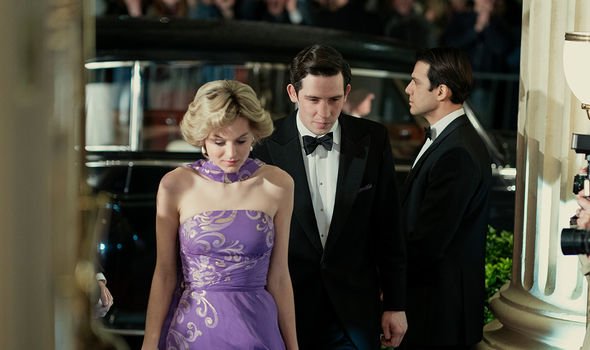
Diana and Charles depicted in The Crown during the Avalanche episode (Image: Netflix)
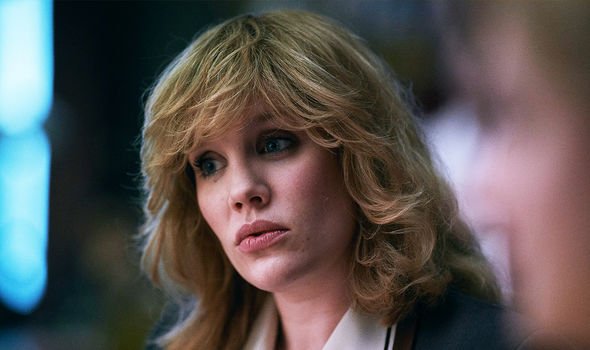
The Crown suggests Charles wanted to be with Camilla after the terrible accident (Image: Netflix)
This is said to be accurate but is thought to have happened in 1987 instead.
However, the Netflix drama suggests Charles rebelled and did not want to fix his marriage on his mother’s advice, unlike Diana, who appears keen to make amends.
But Vanity Fair recalled in 1988 that the next public event the pair carried out together “displayed an ease and mutual respect that had not been seen for a long time” between the two royals — presumably because of their successful meeting with the Queen.
Journalist Georgina Howell then noted in the months after the terrible skiing incident, that their marriage entered a new phase of “dutiful accommodation”.
The official enquiry into the skiing accident also found Charles to be in no way responsible, and he was even credited for resuscitating Patti Palmer-Tomkinson.
He brought her back to consciousness and spoke to her constantly, while rubbing her face which had gone blue.
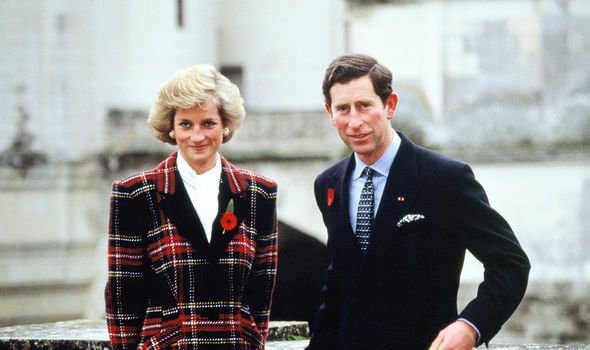
Reports from 1988 suggest Diana and Charles’ relationship settled after the incident (Image: Getty)
She would later say: “I was hanging on every word, it was like a lifeline. [Charles] was so calm, so conversational.”
The Prince and Princess of Wales were united in their support for Hugh’s widow, Sarah Lindsay, with both of them calling her regularly afterwards to help her in her grief.
Mrs Lindsay had originally requested that Netflix avoided including the tragedy in the show.
She said: “I suppose members of the Royal Family have to grin and bear it, but for me it’s a very private tragedy.”
In return, she said she received “a kind letter” from Netflix which said they could not avoid including the avalanche in the series but hoped she would feel they dealt with it with “great sensitivity”.
When Hugh and Sarah’s daughter was born, weeks after his death, Charles was chosen to be Alice’s godfather, while Sarah described Diana as a “constant source of strength” — perhaps demonstrating that the royal couple had the same reaction to the devastating event.
‘Charles — The Man Who Will Be King’ by Howard Hodgson was published by John Blake Publishing in 2007 and is available here.
